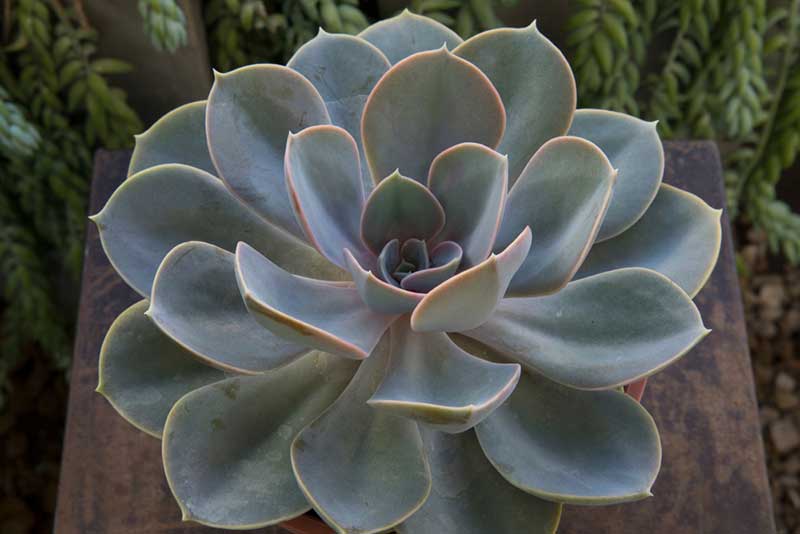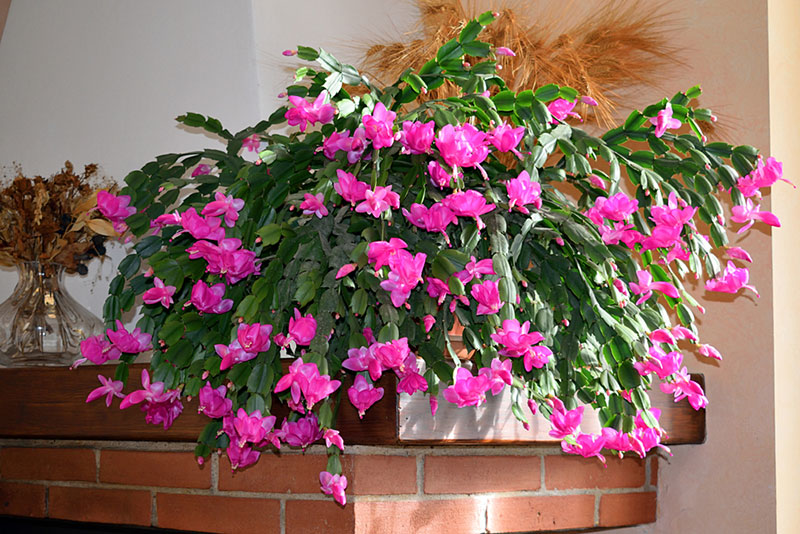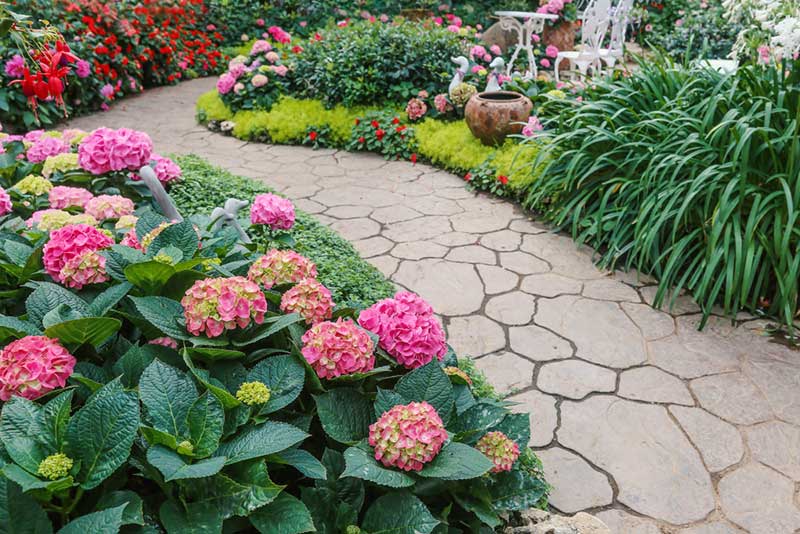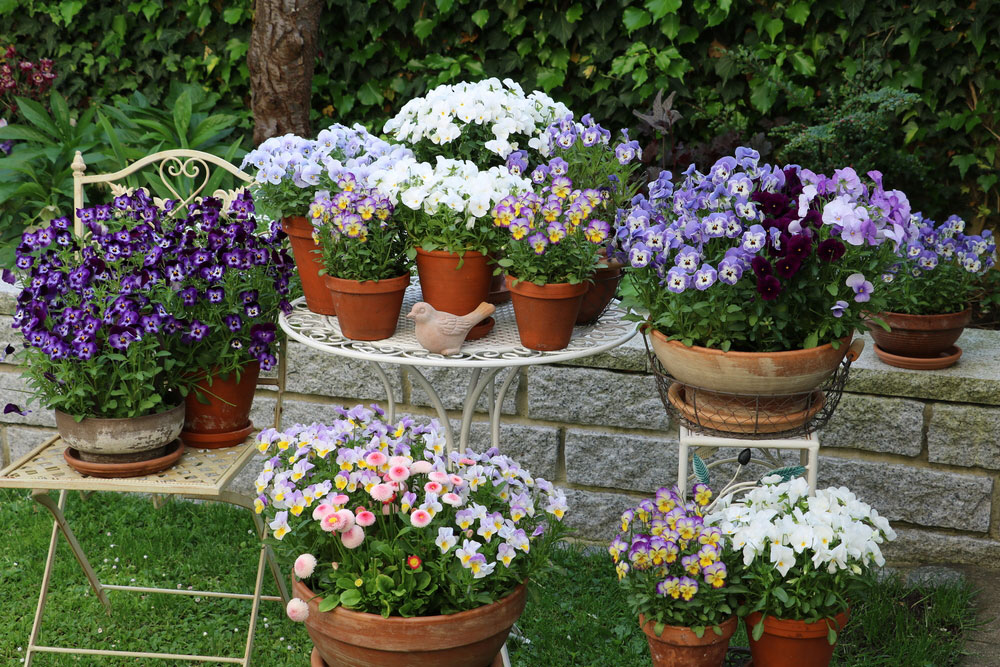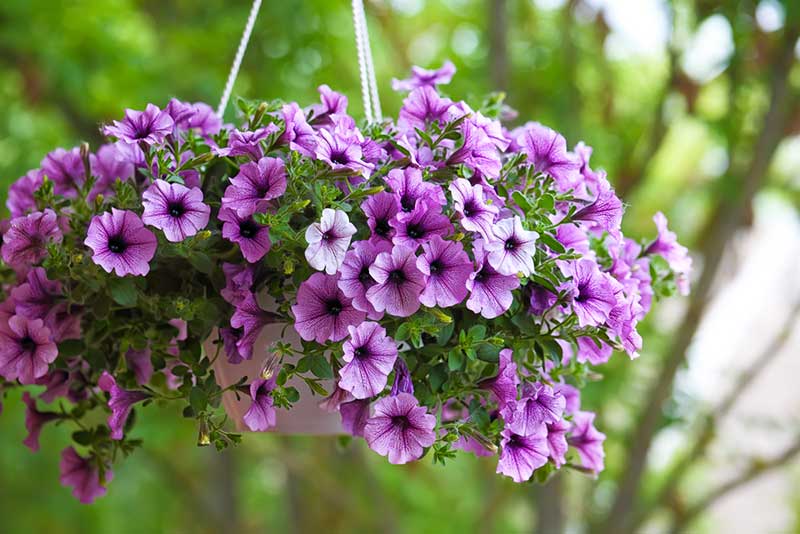
Homeowners across the country today enjoy making gardens and landscapes that combine natural elements and man-made elements.
Creating beauty in and around the home feeds human’s desire for beauty and to be connected to nature, and one popular way to do this is with container gardens and potted plants, and hanging baskets.
For homeowners of all skill levels, the hanging basket offers an opportunity to enjoy a touch of nature wherever they may be!
Why Hanging Baskets Are so Popular
The practice of growing plants in pots and containers became popular with the rise of city life. People did not have the space for sprawling lawns and gardens nor did they have the time to invest in garden upkeep.
But pots and hanging baskets allowed people the chance to have some color and vibrancy even in the middle of the biggest cities.
Lush foliage and beautiful flowers could be enjoyed by families and could beautify homes across the country, regardless of how much available land there was for planting and gardening.
Hanging baskets could easily be put on porches and patios, hung out on balconies, or even kept inside the home. This is where the popularity of hanging baskets today can be attributed to.
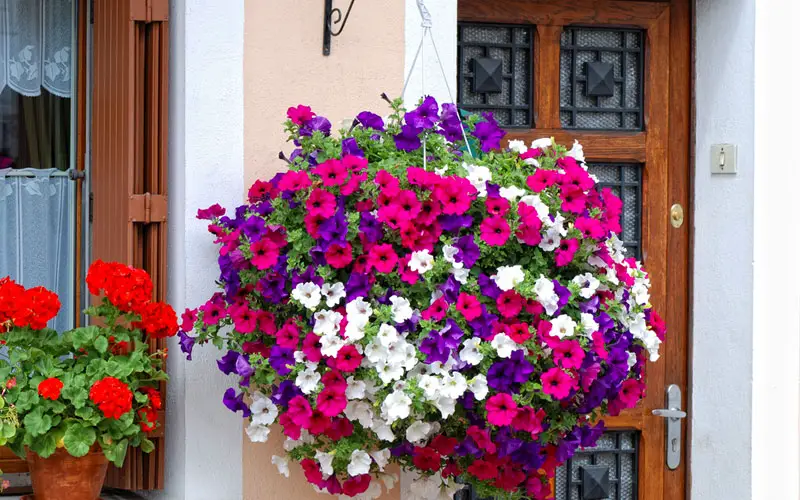
Different Types of Plants to Use in Hanging Baskets
Many plants can be used in hanging baskets as they are essentially containers that are suspended in the air rather than kept on the ground. However, there are some plants that are better suited for this kind of planting.
Obviously, plants that have a vining or cascading growth pattern are ideal as they can trail down from the basket to whatever length the homeowner desires.
Flowering plants with a rounder bushy growing pattern are also ideal for hanging baskets.
There is even the option of using multiple plants or different types in a hanging basket, creating essentially a container garden that is suspended in the air.
Individual creativity is the only real limitation on what can be done with hanging baskets. Some plants commonly used in hanging baskets include:
- Ferns
- Petunias
- Begonias
- Impatiens
- Fuchsia
- Lantana
- Ivy
- Wandering Jew
- Jasmine
- Pansies
- Verbena
- Grasses
- Calibrachoa
- Lobelia
- Portulaca
- Sweet Potato
- Geraniums
- Black-Eyed Susan
- New Guinea Impatiens
- Pothos
- And many more
You can also get creative and use hanging baskets for other types of plants as well. You can add trailing succulents along with other cacti and succulents for a low-maintenance hanging basket.
Herbs can also be easily grown in a basket for an easy-access source of fresh herbs right in your own home.
There are even some fruits and vegetables that be grown in hanging baskets because of their bushing growth habits. The possibilities are nearly endless when it comes to what you can put in your hanging baskets!
How Many Plants Should You Plant in a Hanging Basket?
Something to be considered when plating up a hanging basket is the size of the basket you are working with. If you have a 10” (in diameter from the top) hanging basket, it will not hold as many plants as a 13”+ hanging basket would.
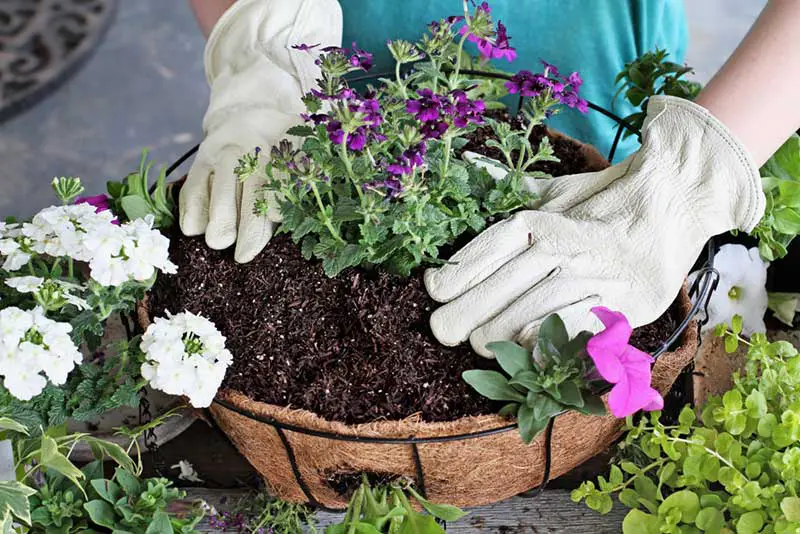
The following is a helpful guide to keep in mind when planting your basket:
- 10”: 1-3 plants
- 11”: 1-5 plants
- 12”: 1-6 plants
- 13”+: what it will hold.
It is important to note that these numbers could be as few as one single plant, regardless of the size of the basket. This is because it ultimately depends on how big your plants are, to begin with.
This means you will have to decide if you are willing to wait a month or so for smaller pants to grow and fill in the basket. If you want a more instant look you are going to need to use more plants or larger plants from the start.
The key thing to remember when planting your hanging baskets is that any plants you put in will continue to grow so make sure even a fully plants basket has at least a little room for the plants to keep growing and filling out.
General Care Tips for Hanging Baskets
Once your hanging basket is planted it is time to sit back and enjoy its beauty. There will be some general care and upkeep considerations though to ensure your basket looks its best for as long as possible.
- Sun levels- make sure you use pants that need the same amount of sun and that you proved enough light for the plants to grow.
- Watering- maintain appropriate moisture levels and keep up with waterings, usually by soaking the soil and letting it drain and dry between waterings.
- Soil- use soil that will drain well but also hold onto moisture, so it is damp but not soggy, and use peat moss to jeep roots inside the basket.
- Pruning- remove dead flowers to encourage new growth and prune back vines and branches to keep things looking neat and beautiful.
With these tips in mind, you can create stunning and beautiful hanging baskets to enjoy in the comfort of your own home!

